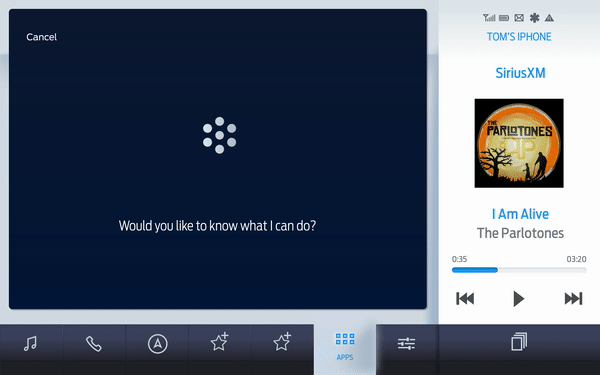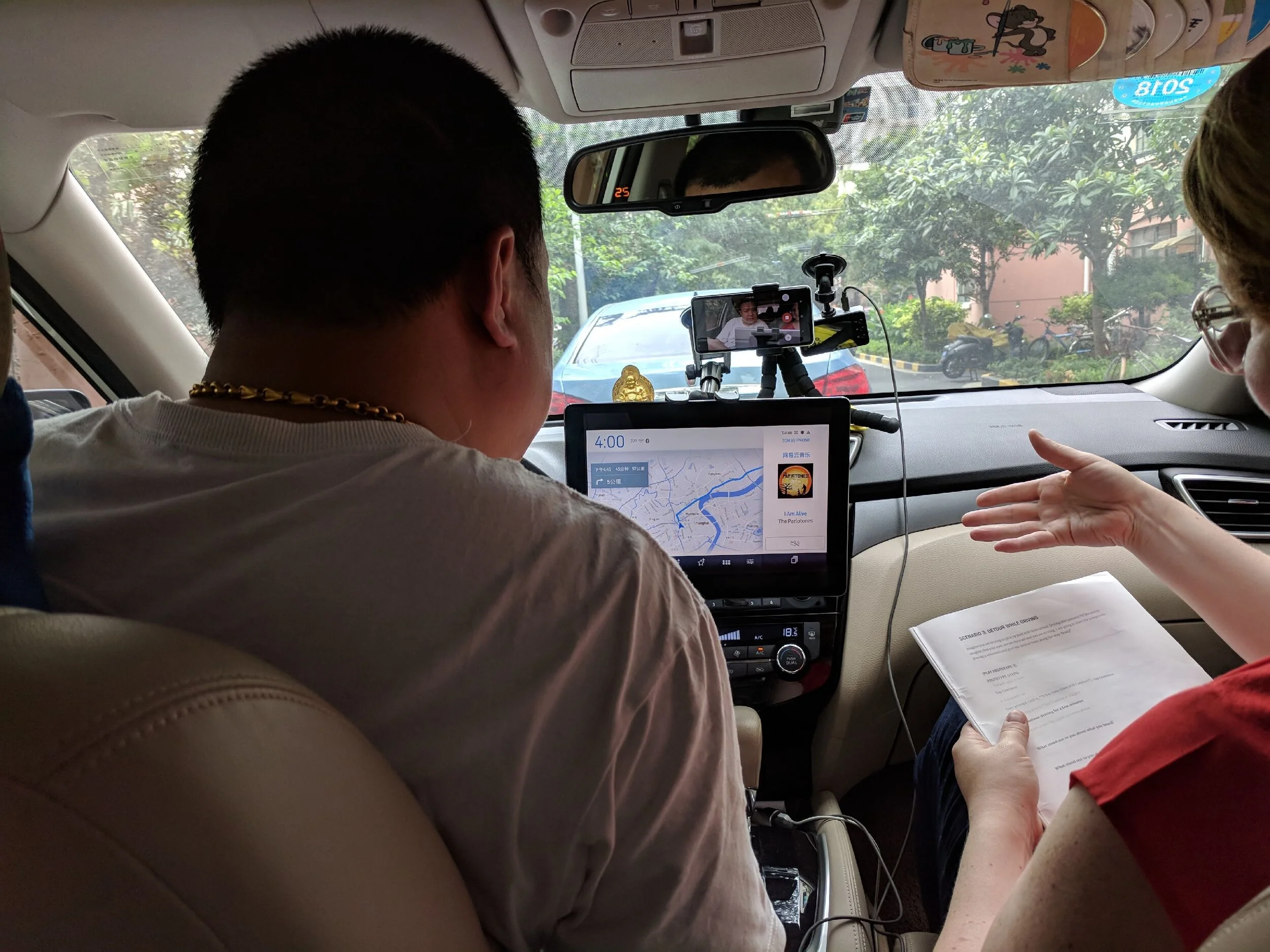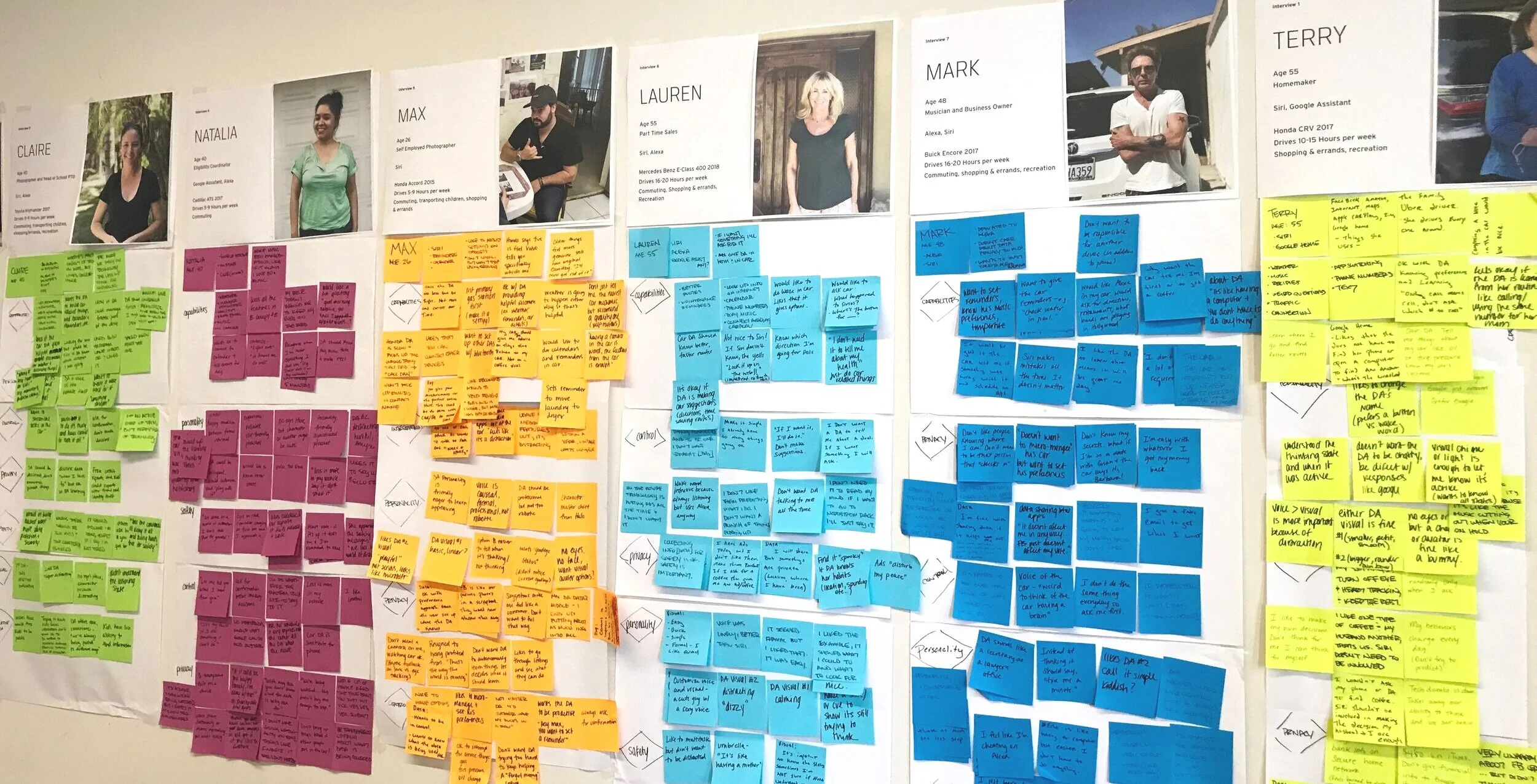Automotive Voice Agent Expectations and Cultural Variations
My Role: Solution Lead
Duration: 14 weeks
We conducted research around the world to understand cultural variations in expectations of voice agent visualization, tone and functionality. The research consisted of ethnographic interviews in four countries with the goal of applying the learnings for an in-vehicle voice agent. The design included the creation of a visual expression, prototype, and voice design for use in testing and to inform the end product.
The Challenge
What are the regional expectations of a voice AI?
Goal:
Understand cultural variations and expectations of voice agents in four regions: Europe, Asia, South America and North America. Discover the preferred level of anthropomorphism in voice assistants in visuals, tone, and conversation.
Prototypes
We created a series of prototypes to walk participants through various scenarios with a voice agent. We created a voice visualization to insert into the previously designed UI and crafted user scenarios, flows and rules for the end result.
Design Artifacts
Contextual Interviews
We observed and interviewed participants in their homes and cars to better understand their needs and motivations in a familiar context. Each session focused on two primary areas:
Evaluation of a prototype on an iPad mounted in the center stack area of their car
Discussion about digital assistants of the future, prompted by illustrations of polar examples of key tensions (“boundary concepts”)
Findings
Preferences varied across regions based primarily on available technology and secondarily to cultural variation. The majority of respondents in all regions wanted to have a customized experience, but the levels of visualization and personality varied widely. The most important factor in all countries was driver safety.
Learnings
1. The voice agent is the voice of the car and should be the vehicle expert.
Across all regions, users expect the voice in their car to be the expert in the car’s maintenance and safety. Leverage the auto maker’s expertise in vehicles to focus on knowing when and what is going on in real-time.
2. The participants in China expected AI interfaces to have more character and options.
The users interviewed in Shanghai, China had higher expectations of voice service than in other countries. They generally wanted more personality and options for visuals and voice. Generally, the users in China and LA were more comfortable with characters and casual interactions with AI.












